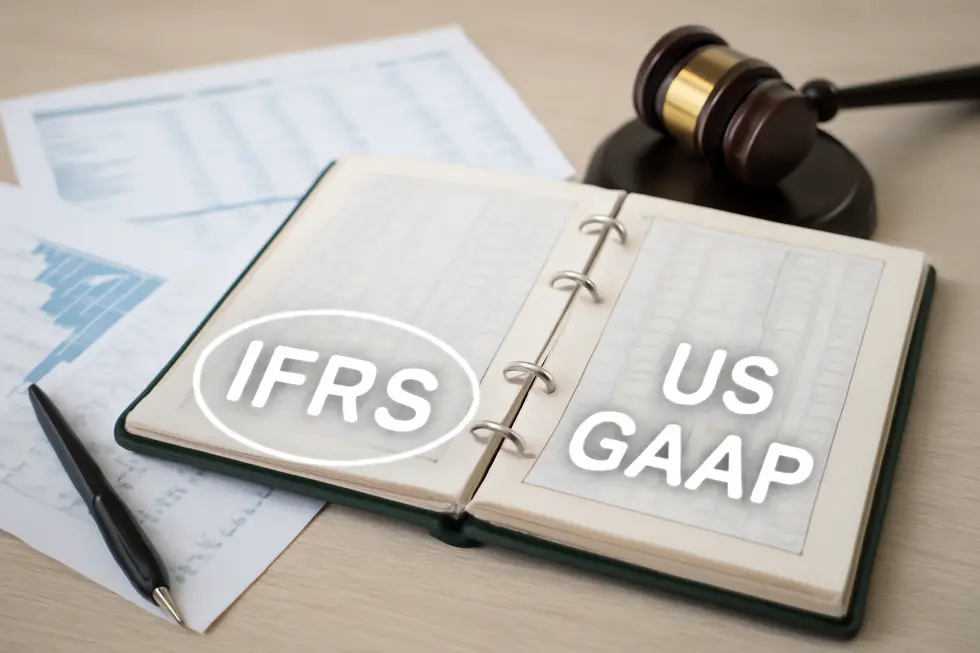Introduction
For business owners seeking sustainable growth and a strong market presence, understanding the value of a trademark extends beyond mere branding. A trademark is not just a symbol or a logo—it is an asset that can drive economic benefits, protect your business identity, and fuel competitive advantages. Discerning why a trademark qualifies as an asset requires delving into what intangible assets are, the legal framework protecting them, how accounting standards recognize their value, and their economic and strategic implications. This exploration will clarify how trademarks transform from mere identifiers into essential components of corporate value and long-term success.
Tables of Contents
Chapter 1: Understanding Why a Trademark Is an Asset: Defining Intangible Assets and Legal Protection
- How Intangible Assets Define the Economic and Legal Value of Trademarks
- How Legal Frameworks Secure Trademark Value as a Crucial Business Asset
- How Trademarks Drive Economic Value and Competitive Strength as Intangible Assets
Chapter 2: Legal and Accounting Perspectives on Is a Trademark an Asset: Classification Under IFRS and US GAAP
- The Legal Foundations That Establish Trademarks as Valuable Intangible Assets
- Recognition and Classification of Trademarks as Intangible Assets in IFRS and US GAAP
- Navigating the Valuation and Impairment of Trademarks: Accounting Standards and Legal Implications
Chapter 3: Economic Implications of Is a Trademark an Asset: Brand Equity, Market Value, and Revenue Generation
- Harnessing Trademark Power: How Trademarks Elevate Brand Equity and Drive Revenue
- Unveiling Trademark Market Value: The Financial Power Behind Brand Equity and Revenue Streams
- Harnessing Trademark Value: How Brand Equity Drives Revenue and Market Strength
Chapter 4: Strategic Importance of Is a Trademark an Asset: Licensing, Franchising, and Competitive Advantage
- Harnessing Licensing to Monetize Trademarks: Unlocking Brand Equity and Expanding Market Influence
- Franchising Powered by Trademarks: Leveraging Brand Assets for Consistent Growth and Market Expansion
- Building Market Power: Leveraging Trademarks for Differentiation, Protection, and Growth
Chapter 1: Understanding Why a Trademark Is an Asset: Defining Intangible Assets and Legal Protection

1. How Intangible Assets Define the Economic and Legal Value of Trademarks
Intangible assets are non-physical resources owned or controlled by a business that deliver measurable economic benefits. Unlike tangible assets, these assets do not possess physical substance but prove valuable through the exclusive rights or advantages they confer. Common examples include patents, copyrights, trade names, goodwill, and trademarks. Within this category, a trademark stands out as a distinctive intangible asset consisting of words, symbols, phrases, or designs that uniquely identify the source of goods or services in the marketplace.
Trademarks hold economic value because they leverage brand identity to create customer recognition and loyalty, which generates future income and supports competitive advantage. This economic significance is enhanced by their legal status—trademarks are protected under intellectual property law, granting the owner exclusive use and preventing unauthorized imitations that could weaken brand reputation or cause consumer confusion.
Legal protection secures a trademark’s distinctiveness and allows it to be officially registered, legitimizing its classification as a valuable business asset. This formal recognition enables businesses to reflect trademarks as intangible assets on their balance sheets, often measured at acquisition or valuation, and amortized over time for accounting purposes. Moreover, trademarks can generate direct revenue through licensing or sales, granting them tangible financial importance despite their intangible nature.
By combining legal exclusivity with recognized economic potential, trademarks exemplify how intangible assets serve as critical drivers of a company’s market positioning, brand equity, and long-term growth. For more insights on trademark rights and protection, see the detailed guide on trademark legal aspects at Trademark2Go.
2. How Legal Frameworks Secure Trademark Value as a Crucial Business Asset
Trademarks hold their status as intangible assets largely due to the robust legal frameworks that safeguard them. A trademark—whether a name, logo, slogan, or symbol—functions not only as a brand’s identifier but also as a legally protected resource that confers exclusive commercial rights. These rights arise from intellectual property (IP) laws designed to prevent competitors from unauthorized use, thus preserving the trademark’s unique association with the business and its goodwill.
Registering a trademark is fundamental to this protection, granting enforceable exclusivity typically for ten years, with renewals that maintain long-term value. This registration solidifies ownership, deters infringement, and provides legal grounds to defend the mark’s integrity and reputation. The continuous legal recognition of a trademark ensures it remains a valuable asset, ripe for licensing or franchising opportunities.
Equally important is the role of goodwill embedded within the trademark—the cumulative trust and positive perception built among consumers. This goodwill is legally protected and is central to why trademarks translate into economic value. Moreover, trademarks often work alongside complementary protections such as copyrights and trade secrets, creating a comprehensive IP shield that enhances a company’s intangible asset base.
Sustaining a trademark’s value demands ongoing use, promotion, and renewal, underscoring that legal protection extends beyond mere registration. This evolved protection enables trademarks to be influential assets, driving brand equity and market strength.
For businesses exploring how trademarks fit into their asset structure, understanding these legal mechanisms is essential. For deeper insights on protecting brand elements, see this resource on trademark protection for business names and logos.
3. How Trademarks Drive Economic Value and Competitive Strength as Intangible Assets
A trademark is more than a business symbol; it is a powerful intangible asset that delivers lasting economic benefits and competitive advantages. Central to this is goodwill, the consumer loyalty and brand recognition that a trademark embodies. This goodwill transforms a simple name or logo into a strategic resource that influences purchasing decisions and supports premium pricing, ultimately enhancing market share.
Legally protected under intellectual property laws, trademarks grant exclusive usage rights, preserving their distinctiveness against competitors. This exclusivity is vital for maintaining the brand’s strength and safeguarding its value from dilution or infringement. Through licensing or franchising, businesses can monetize trademarks, capitalizing on established market credibility to accelerate growth. However, ongoing quality control is crucial when licensing to maintain the trademark’s positive reputation and legal protections.
In financial reporting, trademarks are recognized as intangible assets when identifiable, measurable, and expected to generate future benefits. Unlike physical assets, their value fluctuates with consumer perceptions and market dynamics rather than depreciating steadily. They serve as barriers to entry, enabling companies to distinguish their offerings clearly and foster brand loyalty, which sustains revenue streams.
Thus, trademarks operate at the intersection of legal protection, economic potential, and competitive strategy. Their recognition and careful management are essential for leveraging their full value in business growth and valuation. For further insights on trademark protection, visit trademark2go.com/trademark-protection-business-name-logo.
Chapter 2: Legal and Accounting Perspectives on Is a Trademark an Asset: Classification Under IFRS and US GAAP

1. The Legal Foundations That Establish Trademarks as Valuable Intangible Assets
Trademarks derive their asset status primarily from the legal rights granted to their owners. Defined as non-physical resources, trademarks encompass recognizable symbols, names, or logos legally protected through registration or common law usage. This protection ensures exclusive rights that prevent others from using identical or confusingly similar marks, thus safeguarding brand identity and consumer trust. Such enforceable rights make trademarks separable assets that can be sold, licensed, or transferred independently from the business itself, distinguishing them from goodwill, which is inseparable.
Accounting standards, including IFRS (IAS 38) and US GAAP (ASC 350), recognize trademarks as intangible assets because they meet key criteria: identifiability, lack of physical substance, and the capacity to generate future economic benefits. These benefits are realized through brand recognition and market positioning, underpinning revenue potential.
Under IFRS, trademarks acquired separately are recorded at cost, while those obtained in business combinations are recognized at fair value. However, internally generated trademarks are seldom capitalized due to challenges in reliably measuring their value and forecasting economic benefits. US GAAP follows a similar approach, generally expensing internally created trademarks as incurred. Both frameworks require trademarks with indefinite useful lives to undergo periodic impairment reviews instead of systematic amortization, reflecting their potentially renewable legal protection.
This legal basis of enforceable rights is critical for accounting recognition, as it aligns economic benefits with measurable legal protections. For further insight into the classification and valuation of trademarks as intangible assets within accounting frameworks, an in-depth resource is available on trademark protection and business name/logo considerations.
2. Recognition and Classification of Trademarks as Intangible Assets in IFRS and US GAAP
Trademarks are recognized as intangible assets in both IFRS and US GAAP frameworks due to their non-physical nature and capacity to generate future economic benefits. Under IFRS, specifically IAS 38, a trademark qualifies as an intangible asset if it is identifiable—either separable or arising from legal rights—lacks physical substance, and is expected to contribute value over time. Acquisitions, whether through purchase or business combinations, are recorded at cost or fair value. However, internally developed trademarks typically are not capitalized; costs related to their creation are expensed unless stringent criteria about feasibility and probable future benefits are met.
Similarly, US GAAP (ASC 350) treats trademarks acquired externally as assets recorded at cost. Internally generated trademarks, conversely, are expensed as incurred, reflecting a conservative approach to asset recognition. Both standards require annual impairment testing of trademarks with indefinite lives, triggered either routinely or by indicators suggesting a decline in value.
From a legal standpoint, trademarks embody exclusive rights granted by intellectual property law, reinforcing their classification as assets since they grant control and prevent unauthorized use. This exclusivity, coupled with the ability to license or sell the trademark, supports measurable economic benefits. The legal protections thus underpin the asset’s valuation and classification in financial statements.
This integrated legal and accounting recognition confirms trademarks as vital intangible assets, granting businesses both competitive advantage and financial significance. For a more detailed understanding of intangible asset measurement under these standards, consult resources on classifying and measuring intangible assets under IFRS and US GAAP. Additional insights into the legal protections of trademarks can be found in discussions about trademark protections linked to business names and logos.
3. Navigating the Valuation and Impairment of Trademarks: Accounting Standards and Legal Implications
Trademarks, recognized as intangible assets under both IFRS and US GAAP, typically hold an indefinite useful life when legal protections are maintained, thus exempting them from amortization. Their measurement begins at cost, encompassing purchase price and directly attributable expenses necessary to prepare the trademark for use. After initial recognition, IFRS allows companies either to retain the cost model, carrying trademarks at cost less impairment, or to apply a rare revaluation model if an active market exists, reflecting fair value adjustments. Conversely, US GAAP strictly adheres to the cost model without permitting revaluation.
Both standards mandate annual impairment testing for trademarks with indefinite lives to avoid overstating their recorded values. IFRS requires assessing carrying amounts against recoverable amounts, with impairment losses recognized if the carrying amount exceeds recoverable value—defined as the higher of fair value less costs to sell or value in use. Notably, IFRS permits reversal of impairment losses if conditions improve. US GAAP also mandates yearly impairment testing but prohibits reversal once impairment is recognized, emphasizing prudence in asset valuation.
From a legal perspective, trademarks embody exclusive rights granted to their owners, enforceable through intellectual property laws. This exclusivity facilitates their classification as indefinite-lived intangible assets, contingent upon maintained registrations and renewals. Impairment in legal terms can arise from diminished distinctiveness, enforcement challenges, or significant market devaluation, all affecting the trademark’s capacity to generate economic benefits.
This integrated accounting and legal framework ensures trademarks are accurately valued, highlighting their critical role as strategic assets that support brand identity and competitive advantage. For a deeper dive into trademark protection specifics, see trademark protection for business name and logo.
Chapter 3: Economic Implications of Is a Trademark an Asset: Brand Equity, Market Value, and Revenue Generation

1. Harnessing Trademark Power: How Trademarks Elevate Brand Equity and Drive Revenue
A trademark serves as a cornerstone in building and enhancing brand equity, directly impacting a company’s market value and ability to generate revenue. By symbolizing quality, authenticity, and trust, it communicates distinctiveness to consumers, fostering loyalty and positive brand associations. This elevated brand equity permits businesses to maintain premium pricing and sustain competitive advantage within their industries.
Beyond consumer perception, trademarks are pivotal economic assets reflected in corporate valuation, especially in sectors where intangible elements dominate. Their value often surpasses tangible assets during mergers and acquisitions, signaling strong future revenue potential tied to brand recognition. Moreover, trademarks enable extensive licensing and franchising opportunities. By granting controlled rights to third parties, trademark owners can monetize their brand across markets and product categories without direct operational involvement, creating substantial and diversified income streams.
The legal protection afforded by trademarks further amplifies their economic worth. Ownership exclusivity prevents brand dilution and unauthorized use, safeguarding market position and fostering confidence among partners and consumers alike. Such protections are fundamental when expanding through franchising programs, where territorial rights support sustainable growth.
Incorporating market research into trademark management allows companies to fine-tune marketing strategies and identify growth avenues, ultimately maximizing the economic potential of their trademarks. Recognizing a trademark as more than a symbol, it stands as a strategic asset crucial for long-term financial success and investor appeal.
For businesses seeking insight on protecting brand identity and leveraging trademarks effectively, exploring resources like trademark protection for business names and logos can provide valuable guidance.
2. Unveiling Trademark Market Value: The Financial Power Behind Brand Equity and Revenue Streams
A trademark holds tangible economic significance beyond its legal protection, serving as a strategic asset that directly influences a company’s market value and revenue potential. The assessment of this market value often relies on the market approach, which evaluates comparable transactions involving similar trademarks. Though these comparisons can be difficult due to the unique characteristics of each trademark, expert analysis helps bridge this gap by interpreting industry data and transaction precedents to establish a credible valuation.
This market-informed valuation underscores how trademarks contribute to brand equity—an intangible yet powerful asset derived from customer loyalty, recognition, and perceived product quality. A strong trademark commands premium pricing and fosters stable revenue through licensing and franchising opportunities. These revenue streams are not only immediate financial benefits but also enhance the market capitalization of a company by reflecting the value of its brand in quantifiable terms.
Moreover, trademarks enable companies to strategically monetize their intellectual property by generating royalty income or securing financing through royalty-backed securities. This financial flexibility illustrates the dual role trademarks play as both a brand-building tool and a measurable asset with real economic impact. By integrating these factors, the market value of trademarks reveals their essential role in supporting business growth and competitive advantage.
For a deeper understanding of how such valuation methods apply to intellectual property, exploring detailed resources on trademark and copyright valuation can be beneficial.
3. Harnessing Trademark Value: How Brand Equity Drives Revenue and Market Strength
Trademarks are pivotal economic assets that extend well beyond legal protection, serving as vital engines for both revenue generation and strategic market advantage. At the heart of their economic impact lies brand equity—the accumulated trust, reputation, and emotional connection consumers associate with a trademark. This intangible goodwill enables companies to command premium prices and build customer loyalty, which reduces marketing costs and fosters repeat business.
As brand equity strengthens, the trademark itself gains measurable market value. By projecting future cash flows tied to a trademark’s recognition, businesses and investors can assess its worth more concretely. A well-known trademark signals lower business risks and greater growth prospects, enhancing corporate valuation and attractiveness to potential buyers.
Revenue is often driven through licensing arrangements where trademark owners monetize their brand by permitting others to use the mark in exchange for royalties. Structuring these agreements—exclusive or non-exclusive—can maximize income while expanding market reach. Strong trademarks backed by legal registration empower owners to enforce quality standards, preserving brand integrity and sustaining long-term revenue streams.
Emerging technologies, such as automated royalty management and smart contracts, optimize how trademark-generated revenue is tracked and collected, ensuring accuracy and accelerating payments. Additionally, proactive legal enforcement against counterfeiting protects market share and recovers lost income, reinforcing the trademark’s economic vitality.
Together, these factors illustrate how trademarks function as strategic assets: they enhance brand equity, solidify market value, and unlock diverse revenue opportunities crucial to sustained business success. For further insight on trademark safeguards and business protection, see this resource on trademark protection for business names and logos.
Chapter 4: Strategic Importance of Is a Trademark an Asset: Licensing, Franchising, and Competitive Advantage

1. Harnessing Licensing to Monetize Trademarks: Unlocking Brand Equity and Expanding Market Influence
Licensing stands as a pivotal strategy for transforming trademarks from intangible marks into dynamic business assets. By granting permission to external parties to use a trademark under specific conditions, companies can generate ongoing revenue streams through royalties without direct operational costs. This approach not only monetizes brand equity but also amplifies market presence by enabling access to new geographic regions or product categories via knowledgeable licensees. Such partnerships reduce capital expenditure and risk, facilitating rapid growth while maintaining brand integrity.
Moreover, licensing agreements can be carefully structured—whether exclusive to preserve focused control or non-exclusive to maximize brand footprint—thereby reinforcing competitive positioning. Trademarks, as registered intellectual property, are essential to franchising models, serving as the foundation for consistent brand presentation and customer trust. This legitimizes franchise operations and fosters franchisee confidence, ensuring business model replication is sustainable.
Strategic licensing also paves the way for collaborations or innovation by occasionally adopting royalty-free arrangements, thus opening niche markets or community engagement opportunities that enhance brand value beyond immediate financial gain. Additionally, the licensing potential of trademarks plays a significant role during mergers and acquisitions, influencing corporate valuation and future growth prospects.
In essence, licensing is far more than contractual permission—it is a multifaceted business tool that maximizes a trademark’s economic and strategic impact. For a deeper understanding of trademark protection within business frameworks, refer to the insights on trademark and logo protection.
2. Franchising Powered by Trademarks: Leveraging Brand Assets for Consistent Growth and Market Expansion
Franchising stands as a powerful strategy that transforms a registered trademark from a legal identifier into a vital asset for expanding business reach and sustaining brand integrity. A trademark in franchising serves not only as a symbol of origin but as the foundational asset that maintains consistent customer experiences and reinforces market presence. This legal protection enables franchisors to govern how their brand is utilized, preventing dilution or misuse and ensuring every franchise location upholds the brand’s standards.
The trademark’s intangible value encompasses goodwill, which reflects the emotional bonds and loyalty customers develop toward a brand. This goodwill builds competitive advantage by attracting franchisees eager to replicate a trusted business model and by enabling premium positioning in the marketplace. Franchisees benefit from this established goodwill, leveraging the trademark’s reputation to enter markets more effectively, while franchisors gain reliable revenue streams through franchise fees and royalties, supporting scalable growth with lower capital outlays.
By anchoring franchising efforts on a protected trademark, companies can achieve rapid market penetration with consistent branding and quality control. This scalability not only enhances brand recognition but fosters consumer trust across diverse regions. Ultimately, trademarks as core franchise assets enable businesses to synchronize growth and competitive strength, turning intangible rights into tangible economic value. For more insights on protecting such vital intellectual property, explore detailed guidance on trademark protection for businesses.
3. Building Market Power: Leveraging Trademarks for Differentiation, Protection, and Growth
Trademarks serve as powerful intangible assets that transcend mere symbols; they actively shape a company’s competitive landscape. By legally securing exclusive rights to unique identifiers such as names, logos, or slogans, trademarks establish a protected space where businesses can project reliable quality and build lasting customer loyalty. This exclusivity prevents competitors from encroaching on brand identity, preserving the distinctiveness that consumers associate with superior products or services.
Beyond protection, trademarks are pivotal in creating financial value that can be measured and leveraged. Their worth is not static; it grows as brand recognition deepens, enabling companies to monetize these assets through licensing agreements or franchising models. Licensing offers a strategic pathway to extend brand presence globally or across product categories, generating income while maintaining control over brand integrity. Franchising magnifies this effect by replicating proven business methods anchored by trademark strength, fostering swift expansion without proportionate capital investment.
The enduring power of trademarks lies in their role as barriers to entry. A well-managed trademark portfolio elevates the cost and complexity for new entrants attempting to establish credible, non-infringing brands. This fortification supports sustained market share and spells strategic advantage.
Effectively, trademarks act as engines for growth and differentiation. Through careful licensing and franchise partnerships, companies expand reach, reinforce brand quality, and diversify revenue streams. This strategic utilization transforms trademarks from simple identifiers to critical assets underpinning competitive advantage and long-term business success.
For businesses interested in understanding the scope of trademark protection, exploring trademark protection for business name and logo offers valuable insights.
Final thoughts
Trademarks transcend their role as mere identifiers to become powerful intangible assets that anchor a business’s identity, economic worth, and market position. Through legal protection, trademarks provide exclusivity that safeguards a company’s brand integrity. Accounting standards such as IFRS and US GAAP recognize trademarks as valuable intangible assets, allowing businesses to quantify their economic contribution. Beyond numbers, trademarks enhance brand equity, create revenue streams through licensing and franchising, and serve as strategic tools for sustaining competitive advantages globally. Recognizing a trademark as an asset empowers business owners to unlock its full potential, driving growth, securing market presence, and maximizing valuation over time.
Your IP is the foundation of your success – let’s protect it together before it’s too late. We can’t wait to help you turn your ideas into legally secured assets.
About us
undefined


